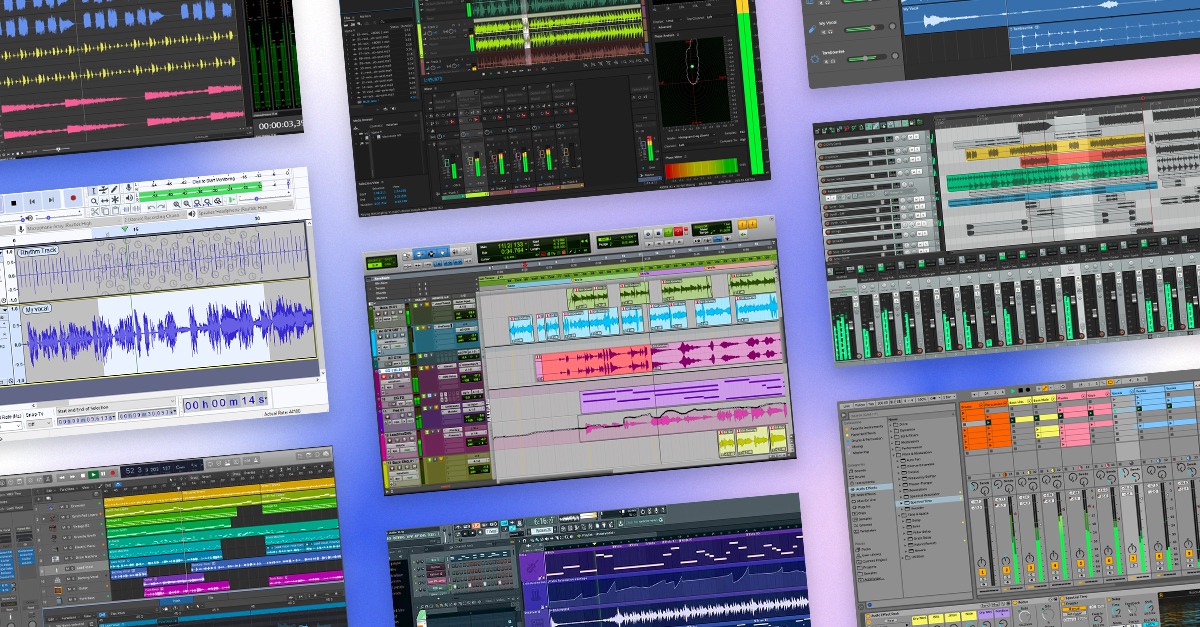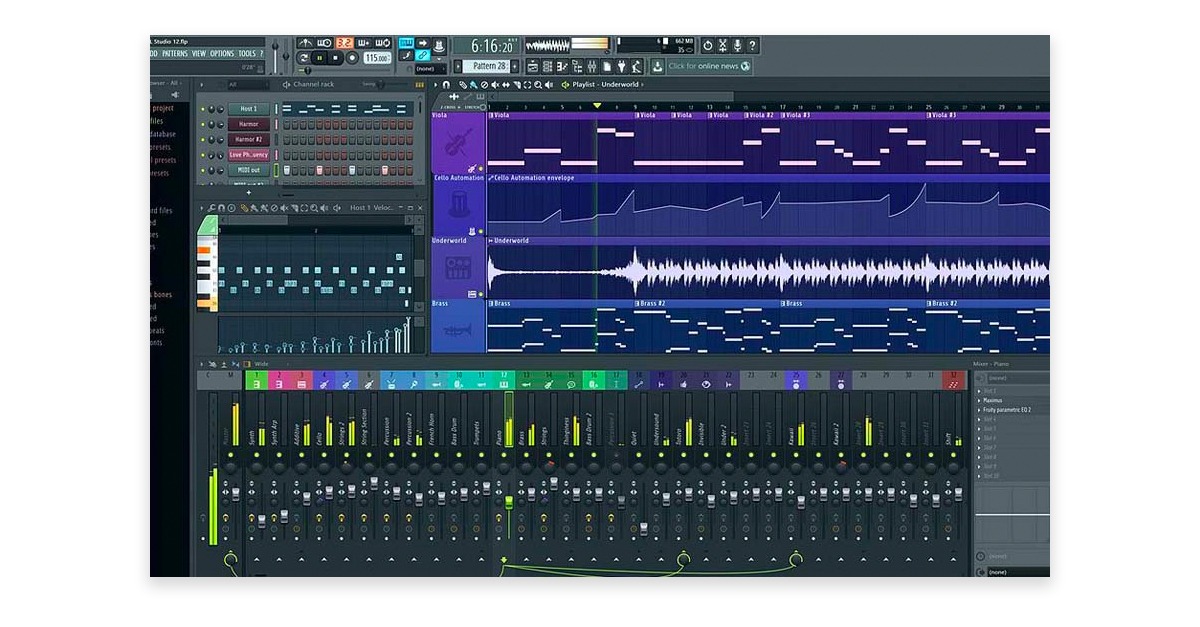
Best Audio Editing Software 2026

Audio editing software is an important tool in many creative fields.
It’s not just music producers who rely on these products—podcasters, video editors, sound designers and even journalists rely on audio editing software to create good-sounding work.
But, which audio editing software is right for you? There’s a handful of different options that are available on the market right and each one comes with its own set of pros and cons.
In this article, we’ll dive into nine different audio editing platforms and sort out each one’s strengths and weaknesses based on capabilities, budget and performance.
By the end, I think you’ll have a good idea of what your needs are and what audio editing tools are right for you.
What is audio editing software?
Audio editing software suites give creatives the ability to manipulate audio using a handful of techniques—cutting, time-stretching, pitching shifting, equalization, filtering and much more.
The centrepiece of any audio editing software platform is the audio editing timeline which clearly layers multiple waveforms in their entirety across a time period.
An audio editing timeline makes it easy for audio editors to visualize different audio pieces and see what’s happening in a waveform.
These layers are what form a mix and tell audio editors where to make cuts, additions or adjustments based on what they want to hear in their production.
Audio editors vs. Digital Audio Workstations (DAWs)
Audio editing software suites and DAWs are very similar, but there’s a few key differences.
Audio editing software suites and DAWs are very similar, but there’s a few key differences.
DAWs combine audio editing capabilities with creative tools, they’re fine for basic audio editing tasks but they focus more specifically on music creation and include more effects, beat making software and MIDI instruments that pure audio editors won’t have.
Audio editing software suites focus specifically on audio editing for all kinds of applications beyond music including podcasting, video, journalism and more.
They also come with features you won’t find in most DAWs.
In general, these features focus on high-precision sample-level audio editing capabilities that can zoom much more closely into waveforms than DAWs can.
Some audio editing platforms also come with restoration tools for diagnosing and fixing damaged audio files.
Now that we’ve sorted that out here’s the nine best audio editing software tools right now.
1. Sound Forge

Sound Forge is the premier audio editing software suite in the pro audio industry.
Sound Forge is the premier audio editing software suite in the pro audio industry.
If you’re looking for a software suite that focuses exclusively on all aspects of audio editing, this is the suite for you.
Sound Forge comes packed with a handful of audio editing modes, from sample-level timeline editing to nondestructive region marker-based editing in Event Mode.
The suite also includes time-stretching options, synthesis tools for generating waveforms, white and pink noise.
You also get full compatibility with all plugins and the option to extend the suite with Sound Forge’s audio restoration tools which are useful for improving the quality of damaged audio.
If you’re getting into professional audio editing and have a large budget, this could be an excellent option to consider.
2. Adobe Audition

Adobe Audition is another audio editor that’s part of Adobe’s Creative Cloud software suite.
This jack-of-all-trades audio editing software has many applications for professional creatives.
It’s optimized for a lot more than just music production, with settings for podcast and film audio editing.
Audition even comes with fully-fledged audio restoration software to help with cleaning up audio with diagnostic tools.
For video and podcast editors, Audition comes with its Remix to Fit tool that helps with sizing a clip to a specific length or keyframe.
Of course, Audition comes with a complete recording interface for capturing, mixing and editing audio as well.
3. Audacity

Audacity has been around for a long time, it’s a free audio editing suite that’s been used by many budding creatives.
For a free audio editor, Audacity comes with a lot of great features and is incredibly functional. It includes a great multi-channel timeline editor, mixing tools and is compatible with most plugins.
If you’re looking to edit audio on a robust software suite, this is a great low-budget choice.
For a free audio editor, Audacity comes with a lot of great features.
Its main downside is that it only works with raw audio—so if you want to incorporate MIDI editing or MIDI instruments in your workflow, you’ll have to turn elsewhere.
4. Logic Pro

Logic is Apple’s more advanced version of GarageBand.
While it’s primarily known as a great DAW for music production, it’s absolutely a great option for professional audio editing as well—especially for video editors working in FinalCut Pro.
Logic comes with a well-designed timeline editor, time-warping features, mixing tools, plugin compatibility and deep integration with other creative platforms within Apple’s ecosystem.
Of course, the main downside of using Logic is that it’s an Apple-only software suite and isn’t available for Windows.
5. Pro Tools

Pro Tools is an industry staple for many audio professionals.
It’s known for its interface that best accommodates live recording and mixing. It also comes with ample audio editing capabilities, making it a great choice for professional audio editing.
It’s a fully-fledged audio production software suite that’s highly recommended if you need deep features with tons of functionality beyond basic audio editing.
It comes at a premium price, but if you’re a professional, Pro Tools is definitely worth checking out.
6. GarageBand

GarageBand is the simpler, less feature-rich version of Logic Pro.
It comes pre-installed on all Mac devices so you might already have it right now. Its iOS version is excellent for on-the-go audio editing as well.
GarageBand won’t come with audio restoration features or as many mixing tools as other platforms on this list.
But it’s a perfectly fine entry point for basic audio editing tasks with its well-conceived editing timeline and recording interface.
If you’re an Apple user this is one of the best free DAWs available right now.
7. FL Studio

FL Studio is a beloved DAW among many beatmakers and hip-hop producers. Its best known for its MIDI and drum programming workflow.
But, aside from its creative capabilities, it comes with capable audio editing functionalities that rival other music-oriented DAWs on this list.
FL Studio comes with a great timeline editor, mixing controls and plugin compatibility.
This is a decent place to look for basic audio editing needs, especially if you’re looking for creative functions beyond just audio editing.
8. Ableton

Ableton is definitely a DAW that’s oriented towards the creative side of music production.
It’s a beloved DAW for many artists who appreciate both its audio timeline view and its clip view.
While Ableton is well respected for being a solid creative platform, it also comes with capable audio editing functions including its audio Warp tool that adds pitch shifting and time stretching into its long list of features.
Ableton is a versatile DAW that answers many creative needs within music production, so it’s a choice contender for music producers in need of audio editing and with tons of creative features.
9. Reaper

Reaper is maybe the cheapest DAW available that isn’t marketed explicitly as a free DAW.
That being said, you can try Reaper free for a certain time period until you’re reminded to pay for the platform.
Reaper is a capable audio editor with similar functionality to Logic and FL Studio. It has a great timeline editor, mixing section, recording interface and compatibility with external plugins.
If you’re looking for a professional quality DAW on a budget, definitely take a look at this one.
Gear guides, tips, tutorials, inspiration and more—delivered weekly.
Keep up with the LANDR Blog.



